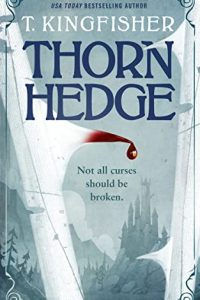Ian Mond Reviews The Glassy, Burning Floor of Hell by Brian Evenson
 The Glassy, Burning Floor of Hell, Brian Evenson (Coffee House Press 978-1-56689-611-5, $16.95, 248pp, tp) August 2021.
The Glassy, Burning Floor of Hell, Brian Evenson (Coffee House Press 978-1-56689-611-5, $16.95, 248pp, tp) August 2021.
I first came across Brian Evenson’s work more than a decade ago when I read his unconventional, hard-boiled detective novel Last Days. With its noir-inflected prose and its deeply weird story about a religious cult devoted to the holy act of amputation, the book left an indelible impression. And yet, despite my love for Last Days, I’ve done a poor job keeping up with Evenson’s output, which now includes ten novels, a handful of novellas and over 150 short stories. When I saw that Evenson’s seventh collection was coming out in August from Coffee House Press, I knew it was time to reacquaint myself with his work, and I’m so pleased I did. The 22 horror stories collected in The Glassy, Burning Floor of Hell – the majority published in the last three years – are imbued with the same appreciation for the odd and macabre that made Last Days such a memorable novel.
The collection’s opening story, “Leg”, involves a sentient, homicidal, bionic prosthetic attached to the captain of a starship, who convinces its owner to seek out a creature “that moves in the slow, undulating pattern across the currents of space.” Allusions to Moby-Dick aside, what stands out about the piece is that you never question the absurdity of the premise, even when the leg starts killing members of the crew. It’s a feature of Evenson’s prose, his complete control of the emotional register of each story, that becomes clearer as you progress through the collection.
“Leg” also introduces the reader to one of the recurring motifs in the book, the underlying fear that we’re not always in control of our thoughts or actions. This theme is present in stories like “In Dreams”, “A Bad Patch”, and “Justle”, which see the main character, or someone close to them, gradually possessed by an external force, whether it be a piece of technology or an alien presence. In the latter piece, “Justle”, the titular protagonist is told by his very drunk father the story of how he survived certain death by making a Faustian pact with two incorporeal entities. The story’s final paragraph, where Justle begins to comprehend the true extent of his father’s contract, is genuinely chilling.
Even when they’re in control of their faculties, Evenson’s characters either lack agency or are compelled to make nihilistic choices when faced with certain doom. Take the main character in “Curator”, an archivist who, when confronted with a toxic cloud that’s devastated the planet, destroys all evidence of humanity in order to save other species from repeating our mistakes. Then there are the protagonists of tales like “The Barrow-Men”, “The Devil’s Hand”, or the “Nameless Citizen”, who, dealt a series of limited choices, are unable to unstick themselves from the path they are stuck on. “To Breathe the Air”, however, is the one tale that cleverly upends this trend. On the surface, it features ingredients similar to those other pieces, with the main character under the thumb of an occupying force. But the story, which is set on a colony world where humanity is literally overseen by aliens who inhabit the “high city,” has a neat wrinkle, a deft bit of plotting that frees our protagonist to overthrow his oppressors. Of all the stories in The Glassy, Burning Floor of Hell, it’s the one with the happiest ending.
Another noticeable trend in the collection is Evenson’s predilection for hauntings. Starting with the very creepy “Myling Kommer”, nearly a third of the pieces feature a ghost or spectral manifestation. While these stories have an old-fashioned, even familiar vibe to them, they all illustrate Evenson’s strength at establishing atmosphere and tone with the single aim of scaring the pants off the reader. As an example, “His Haunting” opens with the main character, Arn, describing to his therapist the “three times… someone or something unknown had opened [his] door as he tried to sleep, silently sliding it ajar and then standing immobile in the gap.” It’s a startling, succinct bit of imagery that immediately raises your hackles. Similarly, pieces such as “Come Up”, “Elo Havel”, and the extraordinary “Haver” (right up there with “His Haunting” as the scariest piece in the collection) feature disquieting moments where the possible and impossible brush against each other.
The title story both is the final piece of The Glassy, Burning Floor of Hell and brings the collection full circle by featuring the main character from “Leg”. Here, though, she isn’t captaining a spaceship but rather attending a wellness workshop on behalf of her sister. It’s a nightmarish, hallucinogenic story (including a dream sequence where the prosthetic makes an appearance) reminiscent of Peter Straub at his best. It’s also the perfect capstone to a collection of unnerving horror fiction, one that reminds readers like me that Brian Evenson is one of the genre’s most talented horror writers.
This review and more like it in the August 2021 issue of Locus.
 While you are here, please take a moment to support Locus with a one-time or recurring donation. We rely on reader donations to keep the magazine and site going, and would like to keep the site paywall free, but WE NEED YOUR FINANCIAL SUPPORT to continue quality coverage of the science fiction and fantasy field.
While you are here, please take a moment to support Locus with a one-time or recurring donation. We rely on reader donations to keep the magazine and site going, and would like to keep the site paywall free, but WE NEED YOUR FINANCIAL SUPPORT to continue quality coverage of the science fiction and fantasy field.
©Locus Magazine. Copyrighted material may not be republished without permission of LSFF.







